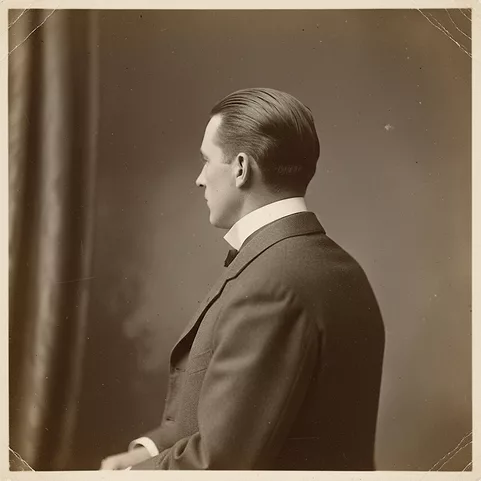Home » The Role of rTMS in Poststroke Depression
The Role of rTMS in Poststroke Depression
January 7, 2022
From The Carlat Hospital Psychiatry Report
Susan L. Siegfreid, MD
Dr. Siegfreid has disclosed no relevant financial or other interests in any commercial companies pertaining to this educational activity.
REVIEW OF: Hordacre B et al, J Neurol 2021;268(4):1474–1484
STUDY TYPE: Randomized controlled trial
Poststroke depression is common, disabling, and often treatment refractory. We know repetitive transcranial magnetic stimulation (rTMS) is effective for treatment-resistant depression. Might it offer a safe and effective treatment for poststroke depression? Two previous small randomized controlled trials of rTMS (using high-frequency [10 Hz] delivery of 1,000 pulses per session to the left dorsolateral prefrontal cortex for 10 sessions) demonstrated both safety and efficacy in poststroke depression (Gu SY and Chang MC, Brain Stimul 2017;10(2):270–274; Jorge RE et al, Biol Psychiatry 2004;55(4):398–405). Researchers in the current study hypothesized that delivery of a higher dose—3,000 pulses per session—would increase clinical benefit without compromising safety.
The study recruited 11 patients with moderate (baseline PHQ-9 score > 5) poststroke depression and no change in antidepressant medication for the prior six months. Most of the patients (n = 9) were male, ages 44–78 years, with predominantly right hemispheric strokes occurring one to 11 years prior to enrollment. Participants were randomized to either active (n = 6) or sham (n = 5) rTMS groups using an identical figure-8 coil. They received 10 treatment sessions, occurring over five weekdays for two consecutive weeks. The primary outcome measure for depression severity was the Beck Depression Inventory-II (BDI), which was assessed at baseline, immediately after treatment, and at one month follow-up.
From baseline to one-month follow-up, the BDI scores in the treatment group decreased significantly more than in the sham group, with an average change of 12 points (p = 0.04). Adverse effects were transient and comparable between the treatment and sham groups.
CHPR’S TAKE
This study was small and only followed moderately depressed patients for one month after treatment, but it provides additional evidence that higher-dose rTMS is a safe and effective treatment option for poststroke depression in patients who do not fully respond to antidepressant medication.
Hospital PsychiatrySTUDY TYPE: Randomized controlled trial
Poststroke depression is common, disabling, and often treatment refractory. We know repetitive transcranial magnetic stimulation (rTMS) is effective for treatment-resistant depression. Might it offer a safe and effective treatment for poststroke depression? Two previous small randomized controlled trials of rTMS (using high-frequency [10 Hz] delivery of 1,000 pulses per session to the left dorsolateral prefrontal cortex for 10 sessions) demonstrated both safety and efficacy in poststroke depression (Gu SY and Chang MC, Brain Stimul 2017;10(2):270–274; Jorge RE et al, Biol Psychiatry 2004;55(4):398–405). Researchers in the current study hypothesized that delivery of a higher dose—3,000 pulses per session—would increase clinical benefit without compromising safety.
The study recruited 11 patients with moderate (baseline PHQ-9 score > 5) poststroke depression and no change in antidepressant medication for the prior six months. Most of the patients (n = 9) were male, ages 44–78 years, with predominantly right hemispheric strokes occurring one to 11 years prior to enrollment. Participants were randomized to either active (n = 6) or sham (n = 5) rTMS groups using an identical figure-8 coil. They received 10 treatment sessions, occurring over five weekdays for two consecutive weeks. The primary outcome measure for depression severity was the Beck Depression Inventory-II (BDI), which was assessed at baseline, immediately after treatment, and at one month follow-up.
From baseline to one-month follow-up, the BDI scores in the treatment group decreased significantly more than in the sham group, with an average change of 12 points (p = 0.04). Adverse effects were transient and comparable between the treatment and sham groups.
CHPR’S TAKE
This study was small and only followed moderately depressed patients for one month after treatment, but it provides additional evidence that higher-dose rTMS is a safe and effective treatment option for poststroke depression in patients who do not fully respond to antidepressant medication.
KEYWORDS depression post-stroke-depression rtms stroke tms transcranial-magnetic-stimulation treatment
Issue Date: January 7, 2022
Table Of Contents
Recommended
Newsletters
Please see our Terms and Conditions, Privacy Policy, Subscription Agreement, Use of Cookies, and Hardware/Software Requirements to view our website.
© 2025 Carlat Publishing, LLC and Affiliates, All Rights Reserved.


_-The-Breakthrough-Antipsychotic-That-Could-Change-Everything.webp?t=1729528747)



